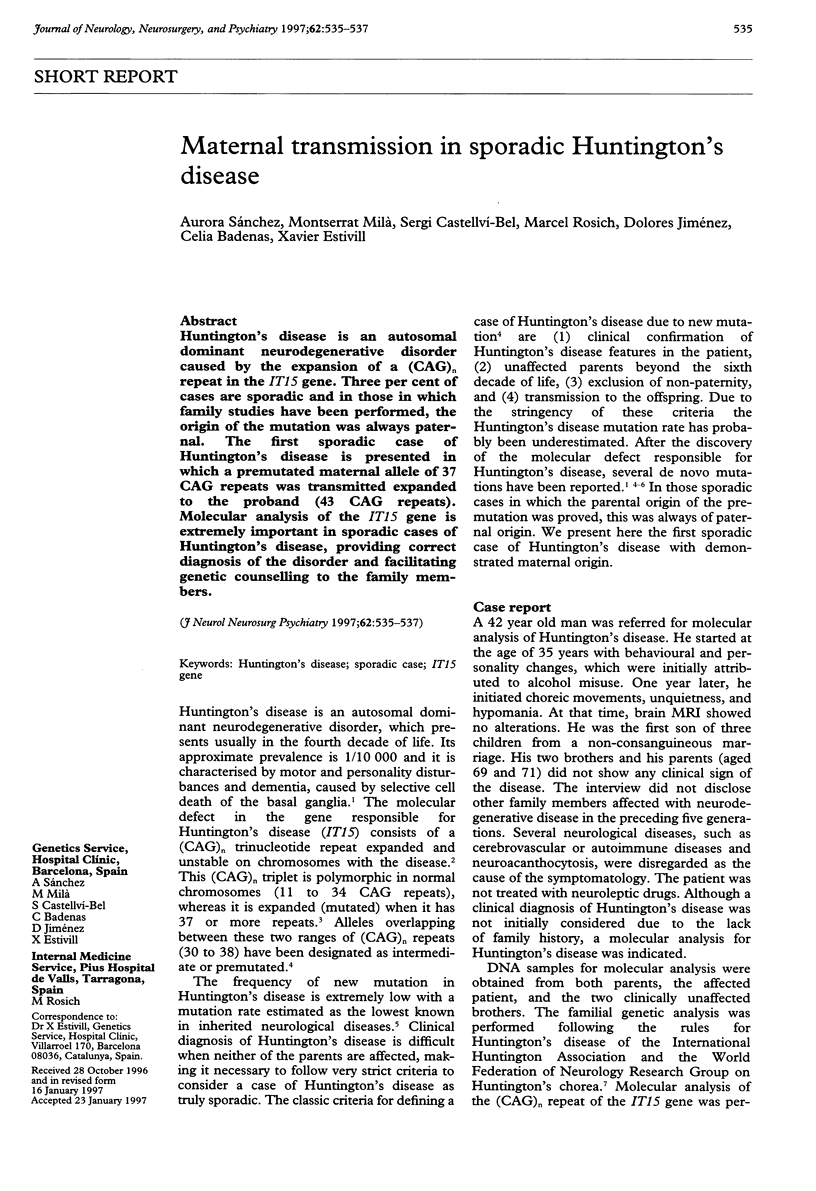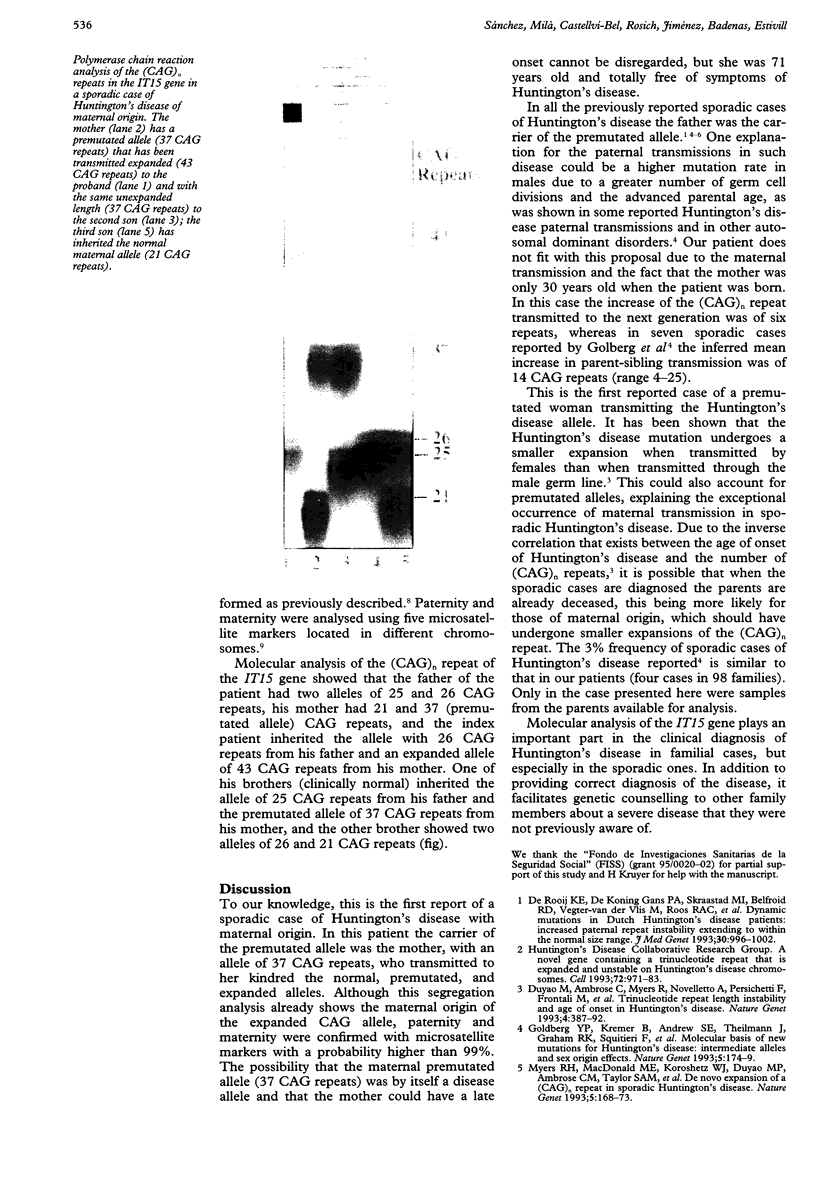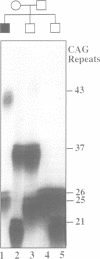Abstract
Huntington's disease is an autosomal dominant neurodegenerative disorder caused by the expansion of a (CAG)n repeat in the IT15 gene. Three per cent of cases are sporadic and in those in which family studies have been performed, the origin of the mutation was always paternal. The first sporadic case of Huntington's disease is presented in which a premutated maternal allele of 37 CAG repeats was transmitted expanded to the proband (43 CAG repeats). Molecular analysis of the IT15 gene is extremely important in sporadic cases of Huntington's disease, providing correct diagnosis of the disorder and facilitating genetic counselling to the family members.
Full text
PDF


Images in this article
Selected References
These references are in PubMed. This may not be the complete list of references from this article.
- Davis M. B., Bateman D., Quinn N. P., Marsden C. D., Harding A. E. Mutation analysis in patients with possible but apparently sporadic Huntington's disease. Lancet. 1994 Sep 10;344(8924):714–717. doi: 10.1016/s0140-6736(94)92208-x. [DOI] [PubMed] [Google Scholar]
- De Rooij K. E., De Koning Gans P. A., Skraastad M. I., Belfroid R. D., Vegter-Van Der Vlis M., Roos R. A., Bakker E., Van Ommen G. J., Den Dunnen J. T., Losekoot M. Dynamic mutation in Dutch Huntington's disease patients: increased paternal repeat instability extending to within the normal size range. J Med Genet. 1993 Dec;30(12):996–1002. doi: 10.1136/jmg.30.12.996. [DOI] [PMC free article] [PubMed] [Google Scholar]
- Duyao M., Ambrose C., Myers R., Novelletto A., Persichetti F., Frontali M., Folstein S., Ross C., Franz M., Abbott M. Trinucleotide repeat length instability and age of onset in Huntington's disease. Nat Genet. 1993 Aug;4(4):387–392. doi: 10.1038/ng0893-387. [DOI] [PubMed] [Google Scholar]
- Fuentes J. J., Banchs I., Volpini V., Estivill X. Genetic variation of microsatellite markers D1S117, D6S89, D11S35, APOC2, and D21S168 in the Spanish population. Int J Legal Med. 1993;105(5):271–277. doi: 10.1007/BF01370384. [DOI] [PubMed] [Google Scholar]
- Goldberg Y. P., Kremer B., Andrew S. E., Theilmann J., Graham R. K., Squitieri F., Telenius H., Adam S., Sajoo A., Starr E. Molecular analysis of new mutations for Huntington's disease: intermediate alleles and sex of origin effects. Nat Genet. 1993 Oct;5(2):174–179. doi: 10.1038/ng1093-174. [DOI] [PubMed] [Google Scholar]
- Myers R. H., MacDonald M. E., Koroshetz W. J., Duyao M. P., Ambrose C. M., Taylor S. A., Barnes G., Srinidhi J., Lin C. S., Whaley W. L. De novo expansion of a (CAG)n repeat in sporadic Huntington's disease. Nat Genet. 1993 Oct;5(2):168–173. doi: 10.1038/ng1093-168. [DOI] [PubMed] [Google Scholar]
- Rubinsztein D. C., Barton D. E., Davison B. C., Ferguson-Smith M. A. Analysis of the huntingtin gene reveals a trinucleotide-length polymorphism in the region of the gene that contains two CCG-rich stretches and a correlation between decreased age of onset of Huntington's disease and CAG repeat number. Hum Mol Genet. 1993 Oct;2(10):1713–1715. doi: 10.1093/hmg/2.10.1713. [DOI] [PubMed] [Google Scholar]



